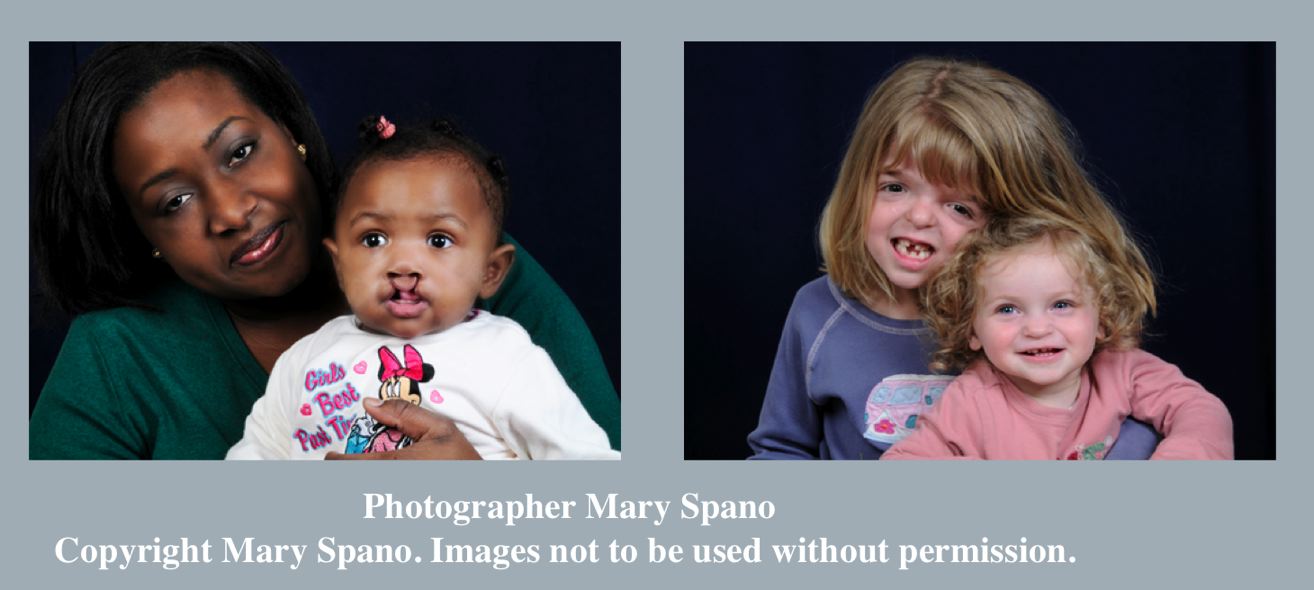Commentary by Mary Spano, Medical Photographer, The Institute of Reconstructive Plastic Surgery, NYU Langone Medical Center. Spano’s work is on exhibit from June 29-August 31 in the Smilow Gallery at NYU School of Medicine. Free and open to the public.
In October of 2006 I joined the team at the Institute of Reconstructive Plastic Surgery at NYU Langone Medical Center, as its medical photographer. At the time, I was a professional photographer with a 20-year commercial background. In addition, I had worked as a Radiologic Technologist over the years to keep my photography career going, but I wasn’t sure what medical photography was. I soon found out that I had gotten my “dream job.” It combined everything that I loved about photography and knew about medical imaging. My job is to photograph people with facial differences, mostly children, and to provide diagnostic images for our doctors to plan surgeries that change those children’s lives.
In the beginning I photographed pre and post surgical protocols. Many of our patients are young and vulnerable; they are apprehensive about everything “clinical.” I began building my studio as a child friendly environment. I brought in child-sized posing chairs, dancing toys, and bubble machines – anything that would make the children comfortable enough to obtain the diagnostic photographs that the surgeons needed to plan their surgery.
Then one day around Christmas 2008, I was photographing a small child who was particularly apprehensive about letting go of Daddy’s hand and I asked him if he wanted Daddy and Mommy in the photo with him. He said yes, and the “Family Portrait Project” was born. I took that first portrait not knowing what it would mean to the families or our department. Here, our families can sit for a portrait in a private setting, without any inhibition. Many of our families might not otherwise have a family portrait. These portraits are now displayed at the Institute in the gallery in our conference room.
The portraits have become the face of the Institute. They also help the staff illustrate to new families that whatever they may face along their path, they have the support of everyone at the Institute as well as the families we treated before them.
Working at the Institute is the most humbling and rewarding experience that I have ever had. I enjoy every day, and look forward to continuing to illustrate the incredible work the Institute does to transform the lives of children with facial differences.

Laura Ferguson
I find this story really profound. The history of medical photography has had a dark side, with many patients (including myself as a child with severe scoliosis) being photographed, often in the nude, without feeling that it was possible to say no – and then with the photographs often published for case studies without the consent or knowledge of the subject (whose privacy was supposedly protected by having a black band placed over their eyes). It’s so moving and healing to learn about medical photography being transformed to play such a positive role.
I’m also interested in the many issues having to do with the role of visual images in medicine – thinking beyond their straightforward diagnostic purpose to deeper questions of identity, self consciousness, and doctor-patient relationship. For example, how does looking at your photographs in conjunction with their own medical images affect children and families, or help them to imagine how the children will look after surgery. I think images can play a powerful role in helping doctors to empathize and patients to feel more at ease with their own bodies.
Corporate Identity
Although I don’t have any personal experience in that area (like Laura) i too find the story quite interesting. I can only imagine what it must be like to strip down as a kid in front of some doctors (of whom many kdis are scared engoug as it is) and have them take pictures of you. So in my opinion the “The Family Portrait Project” is an absolutely fantastic Idea for two reasons. For one the kids are, hopefully, less scared cause it kinda has the toch of a regular Family Picture that is beeing taken and the other would be, that anyone who sees the pictures (not only doctors for diagnostic purouses) but when they are displayed in a gallre or something like that, he or she realizes (asuming not everyone has) that these are normal kids, with normal familys who simply weren’t lucky enough to be born with a “normal” face – or maybe they were? Either way – great approach!!
Michael McCormick
I was stunned to find there are no reviews of this book [Flesh Wounds, by Virginia L. Blum] here at Amazon. This book is a great read. I had trouble putting it down! The author is a professor of literature and makes an apology for stepping outside her field (of literature) to write a book about plastic surgery, but it is PRECISELY her background that makes this book so wonderful.
The topic is well-researched and yet presented in layman’s terms and the stats and facts are nothing but mind blowing. She makes references to Frankenstein, which prompted me to go read THAT classic and she’s right; we’re now formed by society’s impressions of our physical appearance (which is the link to Victor Frankenstein’s monster).
If you think about this, it’s rather insane. When people’s appearance is improved, they’re treated better by society and that gives them more self-confidence and inner peace. How bass-ackwards is that?
I don’t know when I’ve read a more thought-provoking book than Flesh Wounds. I find myself quoting from it to friends again and agai